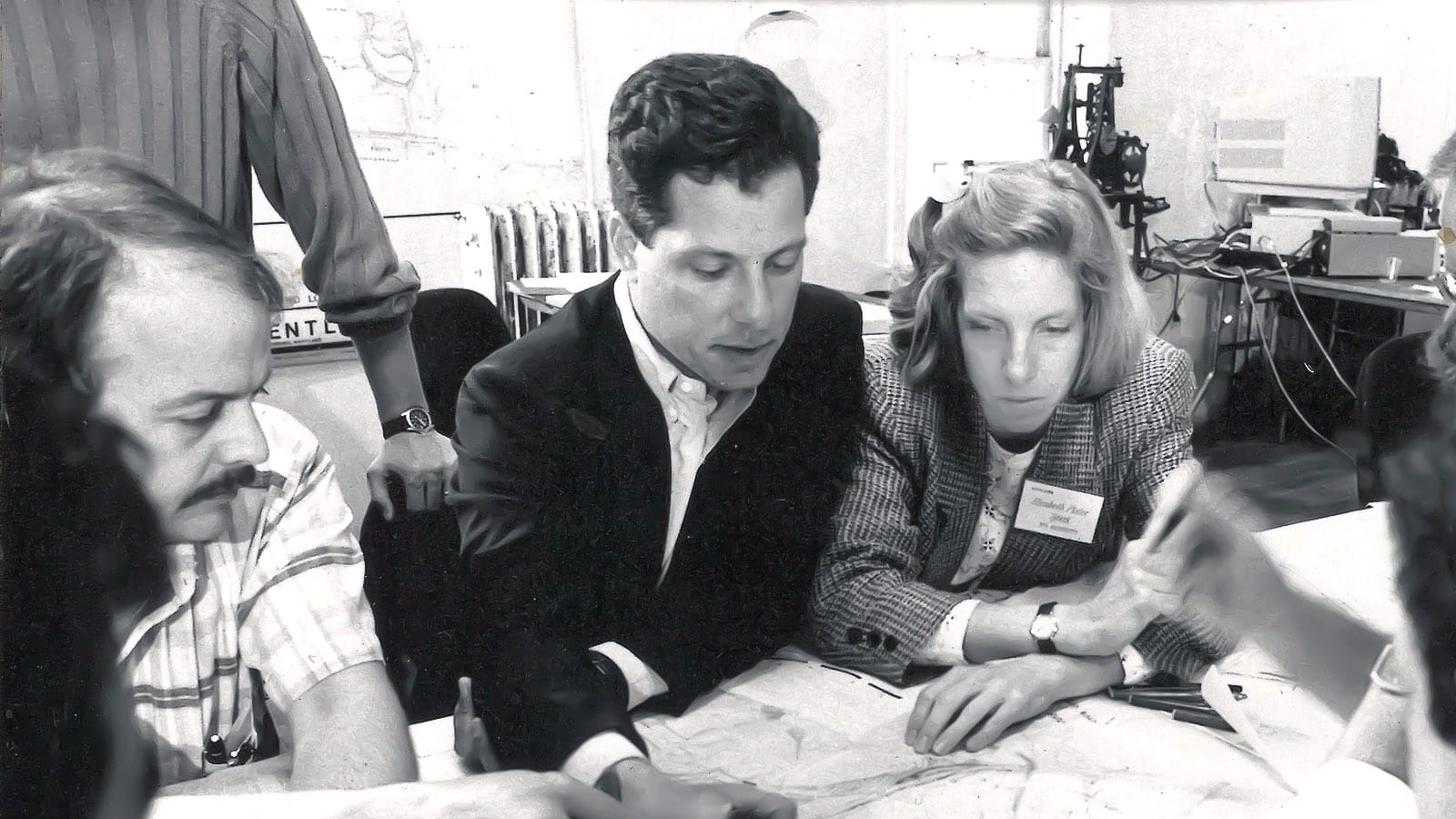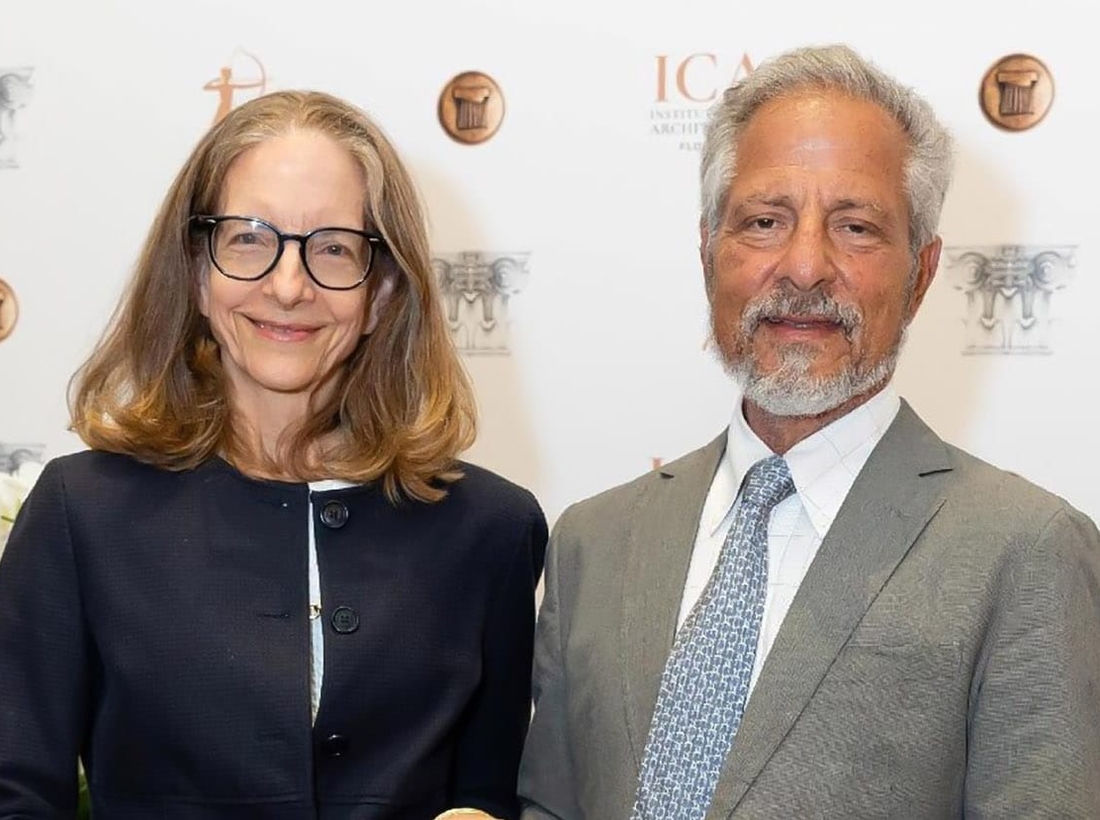Andrés M. Duany ’74 M.Arch. and Elizabeth Plater-Zyberk ’74 M.Arch.


Andrés M. Duany ’74 M.Arch. and Elizabeth Plater-Zyberk ’74 M.Arch.
From the corridors of this campus to the sidewalks of Seaside and beyond, yours is an architectural partnership of enduring impact. Together you saw the potential for building pedestrian-friendly environments and communities that foster connection—and your masterful designs have brought that vision to fruition and revolutionized practices worldwide. Transformers of town planning, for renewing our concept of the urban environment, and for advocating “smart growth” and walkable cities over unsustainable sprawl, we proudly present you both with your second Yale degrees, Doctor of Fine Arts.
Andrés Duany and Elizabeth Plater-Zyberk—leaders of the New Urbanism movement of town planning—are the driving force behind design thinking that emphasizes sustainability and human-scaled communities. The creators of the original New Urban town, Seaside, Florida, they now have dedicated more than four decades to their vision for walkable, accessible, sociable design for revitalized neighborhoods, new towns, and regions around the United States and the world. Alumni of the Yale School of Architecture, where they completed their master of architecture degrees in 1974, both Duany and Plater-Zyberk have returned to the school as teachers—Duany in 1987 as the William Henry Bishop Visiting Professor of Architectural Design, and Plater-Zyberk in 2017 as Robert A.M. Stern Visiting Professor. They are recipients of the National Building Museum’s Vincent Scully Prize, named for the famed Yale architectural historian who was one of their most influential mentors.
Partners in marriage as well as professionally, Duany and Plater-Zyberk met as undergraduates at Princeton University. The Cuban-American Duany was raised in Barcelona, while Plater-Zyberk, whose architect father and family immigrated to the United States from Poland, grew up near Philadelphia. Both of them credit their childhood environments for instilling in them a powerful sense of the value of traditional urbanism. After graduating from Yale, the couple relocated to Miami, Florida, where they co-founded Arquitectonica, known for its striking modernist designs. In 1980, they launched their own firm, now named DPZ CoDesign, focused on alternatives to suburban sprawl and public participation in the design process. In 1992, they co-founded the Congress for the New Urbanism, dedicated to advancing urban ideals including diversification, environmental responsibility, transit, and pedestrian-first design. They remain active in the organization, which meets annually and now counts more than three thousand members.
“In our nearly fifty years of design practice, we have learned a couple of things still worth knowing. This: When good work comes your way, share it. Then, as the need arises, you will not lack for the support of your colleagues. And this: There is nothing more fragile than a new idea. Receiving it with a silence is enough to kill it. Yet, as there is great value in a good idea, do the utmost to bring it to life—especially if it has made your teeth ache. That, it turns out, is a positive symptom.”
Today—having designed more than three hundred projects ranging from individual buildings and urban infill to new communities, regional plans, and zoning codes—Duany and Plater-Zyberk are recognized for their significant and enduring impact on urbanism. They pioneered community participation in planning, collaborating with professionals across disciplines. They also have dedicated themselves to teaching within the profession and in higher education. They created a program in suburb and town design at the University of Miami, where Plater-Zyberk was dean of the School of Architecture from 1995 to 2013. As the Malcolm Matheson Distinguished Professor of Architecture, she has been key in university efforts to better understand how built environments affect human wellbeing. Duany’s prolific public lectures and collaborations have inspired changes in government policies and individual career trajectories. Many DPZ professional alumni have gone on to create firms of their own, extending the principles of New Urbanism around the globe.
Duany and Plater-Zyberk are the co-authors of Suburban Nation: the Rise of Sprawl and the Decline of the American Dream, The New Civic Art: Elements of Town Planning, and The Smart Growth Manual. For their pioneering contributions they have been jointly honored with the University of Notre Dame’s Richard Driehaus Prize, the Brandeis Award, and the University of Virgina’s Jefferson Medal, among numerous other distinctions. Recipient of Architectural Records’s first Women in Architecture Award, Plater-Zyberk has been a member of the U.S. Commission of Fine Arts and the Princeton University Board of Trustees. Both Duany and Plater-Zyberk were elected to the American Institute of Architects’ College of Fellows in 1996.